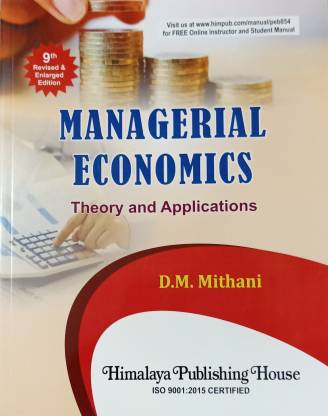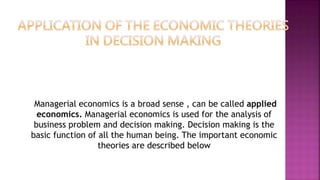Managerial economics is a branch of economics that focuses on the use of economic concepts and tools to analyze and solve business problems. It combines microeconomics, which studies the behavior of individual firms and consumers, with macroeconomics, which looks at the economy as a whole. The principles of managerial economics are applicable in a wide range of business contexts, from small startups to large multinational corporations. In this essay, we will explore some of the key ways in which managerial economics is applied in the real world.
One of the primary uses of managerial economics is in decision-making. Businesses face a range of decisions on a daily basis, ranging from simple operational choices to strategic planning decisions that can have a major impact on the future direction of the company. Managerial economics provides a framework for evaluating the costs and benefits of different courses of action, allowing managers to make informed decisions that maximize profits and minimize risk.
For example, consider a company that is considering expanding its production capacity by building a new factory. Managerial economics can be used to analyze the costs and benefits of this decision. The company might consider factors such as the initial capital investment required to build the factory, the ongoing operating costs of the factory, and the potential revenue that the factory could generate. By weighing these costs and benefits, the company can determine whether building the new factory is a financially viable decision.
Another important application of managerial economics is in pricing decisions. Companies must decide how to price their products and services in order to maximize profits. Managerial economics can be used to analyze the demand for a product or service, as well as the costs associated with producing and distributing it. This allows firms to determine the optimal price point that will maximize profits while still remaining competitive in the market.
For example, consider a company that manufactures and sells a popular consumer product. The company might use managerial economics to analyze the demand for the product, as well as the costs of producing and distributing it. Based on this analysis, the company might determine that it can maximize profits by setting the price at a certain level, rather than trying to sell the product at a lower price in order to increase demand.
In addition to decision-making and pricing, managerial economics is also useful in areas such as marketing and product development. Companies can use economic analysis to determine which marketing strategies are most effective in attracting and retaining customers, as well as which product features are most important to consumers. This allows firms to focus their resources on the most promising areas, rather than wasting time and money on ineffective strategies.
Overall, managerial economics is an important tool that is widely used in the business world to analyze and solve a range of problems. By applying economic principles and techniques, managers can make informed decisions that help their companies succeed in today's competitive marketplace.







